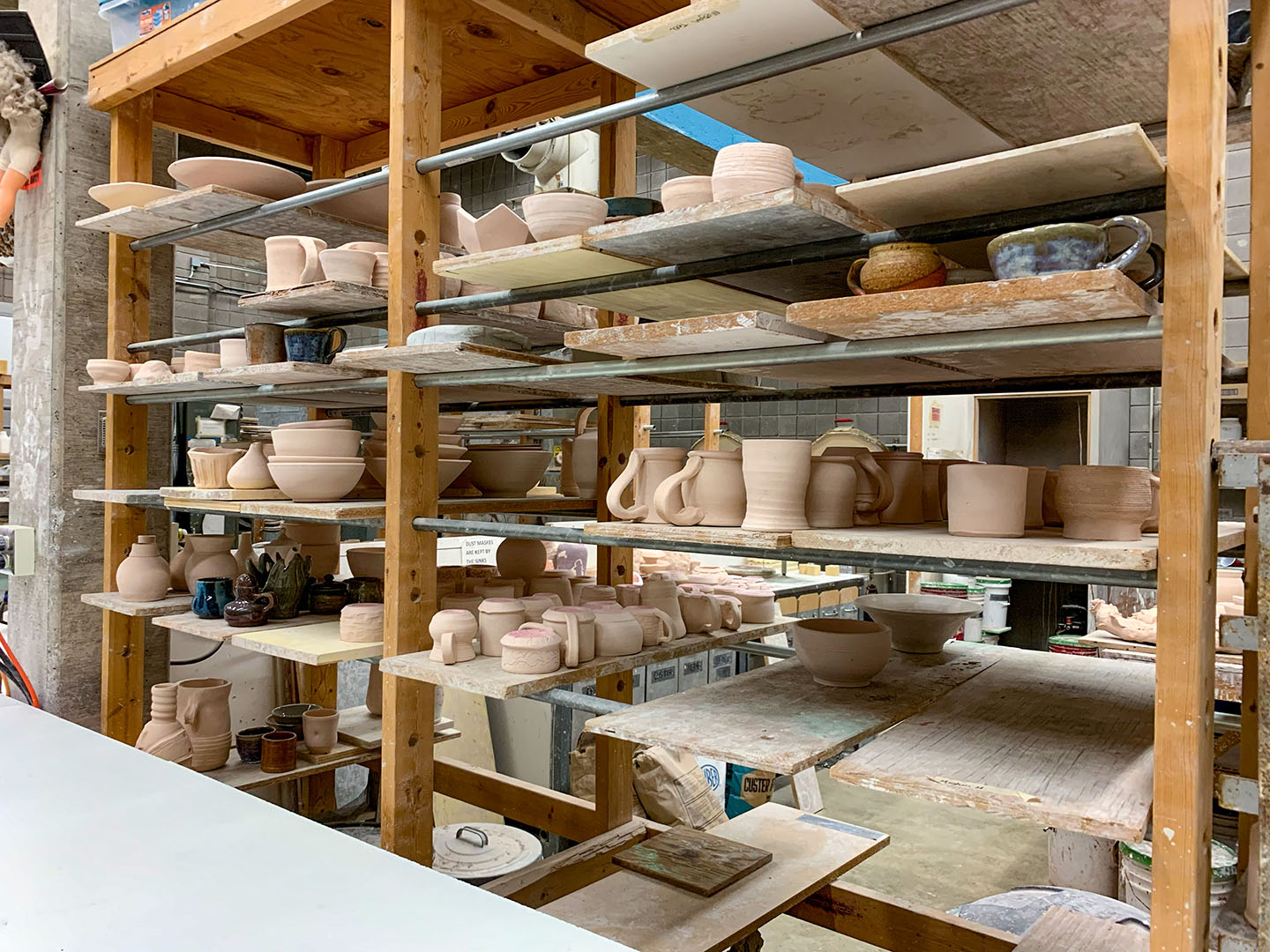
FA Series: Art classes work hand-in-hand, face-to-face
For some classes, the transition to online or hybrid learning is simple. But for hands-on classes, like those involving art – online instruction can be difficult.
This semester, with class instruction being a combination of online, hybrid and face-to-face, each department is adjusting material to fit each type of instruction.
For Michael Hill, a ceramics instructor at USD, making changes to his curriculum and the way he teaches his classes has been a challenge. Hill said he’s had to cut down the amount of assignments in his classes.
“Studio classes need a lot of community,” Hill said. “It’s kind of hard to work together and form a group when everyone is forced to be isolated.”
Hill teaches a beginning ceramics class, as well as two advanced ceramics technique classes. Because of the hands-on nature of the classes, the majority of his instruction has been face-to-face, with limited amounts of students in the classroom and studio.
Since the more advanced ceramics classes are smaller involve fewer students in the studio, Hill said it’s easy to allow students to work independently and spread out the class more.
“’I’ve worked with them long enough to know their strengths,” Hill said. “And so I give them assignments and know that they can work on their own without me hovering over their shoulder. So I think in some ways, they kind of appreciate the fact that they have a little bit more freedom.”
But for the beginning classes, there’s less time spent face-to-face, which Hill said can make it a little harder to form connections with the students.
“I can’t imagine being a college student and having to deal with this,” Hill said. “But the students have been really cooperative and energetic. So I think they understand what we’re trying to do.”
Like the ceramics classes, other art instructors are altering their material to accommodate online and hybrid learning — as well as making sure the classrooms and studios are properly spread out for students so to maintain social distance.
In the event that all instruction is moved online, Hill said he is prepared so students won’t be without materials and equipment to complete ceramics projects.
“Last semester, Spring Break happened and the whole place closed down and no one could come back,” Hill said. “So I told my students to get clay ahead of time, and we can do handbuilding by Zoom so they’ll at least have some material to work with.”
Even with the uncertainty that lies ahead this semester, Hill said he is still excited to teach his classes and form connections with students.
“We have students back on campus, which is always good,” Hill said. “I’m trying to implement a couple of new programs so I’m looking forward to changing it up a little bit.”

